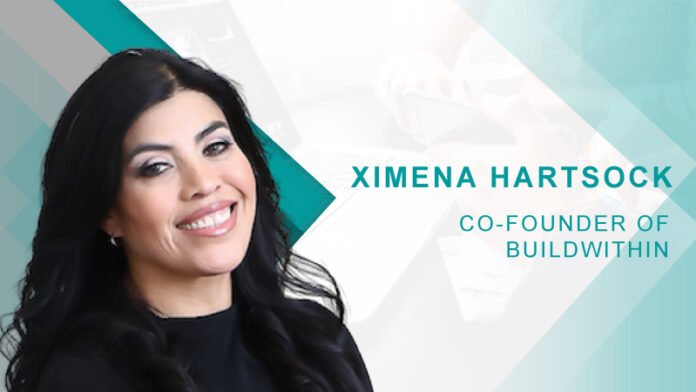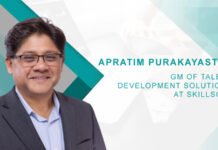1.Can you tell us about your career before BuildWithin?
I studied Spanish Literature and Philosophy in Chile, then migrated to the U.S. and in 2004 completed a doctorate program in administration and policy studies at The George Washington University. Between 2000 and 2010, I was a teacher, school principal, Deputy Chief for Teaching and Learning and Director of Parks and Recreation in Washington, D.C. In 2010, I left the government to work in education reform where I traveled across the U.S. connecting parents and lawmakers. In this job, I realized how hard it was for regular people to share their points of view with legislators. This inspired me to found Phone2Action, the leading technology for digital grassroots advocacy used by major brands and celebrities to run issue campaigns and drive election registration efforts. To address the talent shortage and be able to afford more tech workers, we ran an 8-year tech apprenticeship program at Phone2Action. The program was extremely successful and we learned in practice how apprenticeships work. This is where the idea for BuildWithin was born – to help other employers run workplace learning programs.
2.Can you please elaborate more on the motto of your company “Potential over Credential”?
We all learn best when we learn by doing. When we say potential over credentials we mean that the skills, drive, interest in the job, and ability to complete tasks proficiently are what make an employee effective. Some of the skills may have been acquired through formal learning, but the vast majority are a combination of past experiences paired with drive and potential. Education is only one data point but unfortunately, degree requirements have been historically used in the U.S. to filter who gets a chance to interview for a job. This is not the case in other countries like Switzerland where two-thirds of the population follow an alternative pathway to college.
When HR departments recruit for potential, not only do they expand their talent pools because most job seekers come from non-traditional learning pathways, but they also enlist an army of loyal workers who will be grateful to the employer that gives them a chance to prove themselves.
3.What does BuildWithin do to attract and engage GenZ talent?
Gen Z is an action and purpose-oriented generation that wants to see their day-to-day work impact the company’s products and society. Our mission to unlock the potential of employers and individuals is attractive to this generation.
In addition, we are a tech startup, so we have a vibrant culture without bureaucracy and hierarchy which is very attractive to GenZers. We treat everyone equally, regardless of age or position, and give people opportunities for upward mobility. Our youngest contributor is 13 years old. He creates the music for our marketing videos. Our youngest software developer is 19 years old and he is widely respected for the contributions he makes. Several of our GenZ team members and co-founding team were apprentices in my prior company, so that shows if you give people opportunities they will grow with you and reward you with loyalty.
Young developers also want to work using modern technologies, and they are attracted to working with our tech stack. Word of mouth and referrals from our employees have been the driver of most hires.
4.How does BuildWithin software help employers manage tech apprentices and new-collar workers?
BuildWithin is a federally approved Apprenticeship Intermediary in all 50 states and the District of Columbia. The software helps employers implement new collar programs, apprenticeships, and other workplace learning programs. Key offerings include
- Compliance: BuildWithin software helps employers comply with the United States Code Title 29 – Promotion of labor standards of apprenticeship and other labor laws and regulations.
- Easy-management:. There is an understandable perception that apprenticeships can add a burden to managers and require too much supervision. We developed software with the manager in mind. The software has already been guided by our DOL-approved apprenticeship roles and includes curriculum for: office operations, software development, customer success, QA developer, business development representative, digital marketing, help desk, service desk, and others and is customizable for most roles. BuildWithin tools assist new workers and apprentices in their first year in the new role which is the hardest. Tools include collaboration tools, task management, and supplemental learning that make the apprentice a productive worker that provides value to the employer from day one.
- Data Analytics/Reports: The software tracks demographics, apprentices’ progress, and milestones in compliance with data privacy laws in all 50 states and the District of Columbia. The system automates some functions that HR professionals would have to spend time tracking. For example, the software alerts HR professionals when apprentices are falling behind, when they earn certifications, become eligible for a wage increase, or when they are near graduation.
5. According to you, what are the unique challenges faced by women leaders in your industry?
- The lack of access to pre-seed and seed funds which are critical to getting a company off the ground. This is not new, as women founders have been getting less than 3% of venture capital for years, but under the current economic climate these investments may decrease further. Seed funds can make or break a woman’s entrepreneurial efforts and can be very difficult to access for founders without a network of affluent people. Unless a founder is wealthy, she can’t operate for a long time with her own savings. My call to action to investors is: Give a woman her first dollar and she will make you 10 dollars. I am grateful to my investors, especially Mark Hasebrook with Dundee VC who gave me the first dollar twice – at Phone2Action and at BuildWithin.
- Another challenge is the lack of role models. Women are underrepresented in leadership positions in the tech industry which can make the journey of a woman leader very lonely. There is no playbook on how to be a great woman leader. If you think about the founders of most major tech companies they are all males: Google – Larry Page and Sergey Brin, Apple: Steve Jobs and Steve Wozniak. Microsoft: Bill Gates and Paul Allen, Pinterest: Ben Silbermann, Paul Sciarra, and Evan Sharp, Paypal: Max Levchin, Peter Thiel, Luke Nosek, and Ken Howery, Evernote – Phil Libin and the list goes on.
We need more women starting and growing tech companies, but until women receive more financial investments to start and grow companies we will not see a change.
6. Tell us more about your entrepreneurial journey. What inspired you to venture into the HRTech space?
In my prior company Phone2Action, we had issues hiring talent because we were competing with other tech companies for the same talent pool. So we started an apprenticeship program that we ran for 8 years and was the pipeline for about 30% of our workforce. We learned that apprenticeships were a great strategy to find and develop phenomenal tech talent and that almost every tech role we had was learnable for people without a degree. When Phone2Action was acquired, a group of former colleagues from Phone2Action, plus my co-founder Michelle and I got together and decided to build a company to help other employers start and scale apprenticeships. I had extensive experience managing teams plus the experience of starting, growing, and exiting a company so the transition from Civic Tech to HR tech was exciting.
7.What are the core values of BuildWithin and how do they strengthen the company’s position in the competitive marketplace?
1) Learning is a Journey – Life’s best lessons don’t happen in a classroom, they happen in the world. A-HA moments occur when we learn by doing.
2) Potential over credentials.- We value skills, drive, and interest, not just degrees and empower job seekers to build their skills from within. We empower employers to shift the paradigm and stop relying on outside forces by building their talent muscle from within.
3) We are all owners. Every day, we take the initiative to improve our company by building products and services our customers love. Take risks and ask for forgiveness rather than permission.
4) Customers are why we exist. We do not aim for customer satisfaction, we aim for customer success.
5) We are a company that uses technology to achieve a mission that improves humanity by unlocking the potential in everyone.
8.How do you plan to scale BuildWithin’s operations in 2023?
We are hiring Directors and technical managers in 5 regions: Northern CA, Los Angeles, CA, Tennessee, Northern VA, and Washington, DC. We are also hiring remote staff in a variety of roles. Join us!! Send your resumes to jobs@buildwithin.com or find me on Linkedin: ximenahartsock
9.Please share your thoughts on the evolution of the HRTech space in recent years. What tech trends will dominate the industry in the future according to you?
Today’s workplace is becoming more employee-centric, and HR technology is evolving to align with new needs. With the migration to cloud-based applications with robust data architecture, we will see more data modeling for predictive analytics that can assist in budgeting and forecasting efforts.
A new category of products are coming to the market with a focus on keeping talent engaged, productive, and loyal. I call this category “skills-tech”. These technologies, like BuildWithin, use sophisticated tools like Web3 and immersive Internet also called Metaverse. In the years to come, especially for remote workers, we will see more immersive meeting environments where employees can collaborate in projects in real-time.
The popularity of ChatGPT will inspire employers to try language processing tools. I can see how HR professionals may use these tools to write job descriptions, job announcements, and other materials.
We will see more automation, blockchain verification, and machine learning predictions but our goal in using these new technologies would not be to discount, but to enhance, the “human” aspect of the industry.
I am a board member of the Consumer Technology Association and I just attended the Consumer Electronic Show in Las Vegas where I saw how software is now part of every product that touches our lives. We are in a great place in terms of technology adoption and evolution so now HR professionals are trying new tools and new approaches that will make processes more efficient without removing entirely the human aspect that is necessary in many HR decisions.
10. Tell us more about your leadership style. How do you plan to keep your associates motivated to give their best?
Several of my team members have accompanied me to several jobs, and this is what they tell me: They say that they like that they never have to guess how I feel because I am very direct and candid. They like that I make decisions quickly and I convey a clear vision of where we are going.
I see myself more like a sports team coach than a traditional manager. I unite everyone around one goal and do not encourage competition but collaboration and ownership. My team is fabulous, and I motivate them as much as they motivate me. We all like to win but not despite others but WITH others. We win when we achieve our mission, and our customers are successful.
11. What defines you as a person?
This may sound straight from Kobe’s playbook, but I believe that hard work trumps innate abilities and I want to be partly defined by my hard work. I came to the US from Chile with $500.00 and no connections. What I learned in my first jobs was helpful later in my career as a school principal or Agency Director. When I moved into tech I did not have to start over but many of those prior learnings transferred. So I can say that I am also an apprentice at heart.
Serving on boards is an important aspect of my life. I serve on the Consumer Technology Association board. CTA is the trade association representing the $505 billion U.S. consumer technology industry, which supports more than 18 million U.S. jobs. CTA owns the Consumer Electronic show where the most disrupting products are announced every year.
I also serve on the board of the Economic Club of Washington, D.C. which promotes global awareness of the pivotal role Washington plays in the national and world economies. Today the Economic Club has nearly 1,000 members representing businesses and organizations operating all over the United States and abroad. David M. Rubenstein, Co-Founder, and Co-Chairman of the Board of The Carlyle Group is the current Chairman.
I served on the advisory council of the Migration Policy Institute and the Center for Innovative Technology of Virginia.
I am a philanthropist, investor, mother, wife, daughter, sister, friend, and colleague with dual Citizenship in Chile and the United States.
Discover the full potential of your Hrtech strategy with our comprehensive Hrtech News and Hrtech Interviews.

Dr. Ximena Hartsock Co-founder of BuildWithin
A Doctor in Administration and a serial technology entrepreneur, Ximena Hartsock co-founded BuildWithin, a software and services company that makes it easier for employers to start and run apprenticeships. Hartsock previously founded Phone2Action, the leading software platform for public affairs in the United States acquired by Frontier Growth in 2019. Prior to founding Phone2Action, Hartsock served in the executive cabinet of former Washington D.C. Mayor Adrian Fenty. She serves on the executive boards of the Washington Economic Club, The Consumer Technology Association, and the Migration Policy Institute.












